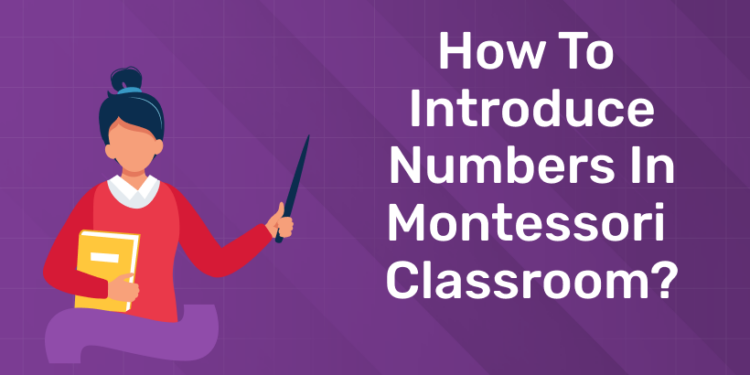Table of Contents
In a Montessori classroom, introducing numbers is a hands-on, sensory-rich experience that helps children develop a strong mathematical foundation. Instead of rote memorization, Montessori education emphasizes concrete materials that allow children to explore numbers through touch, movement, and visualization. In this blog, we’ll explore how to introduce numbers in a Montessori classroom using effective techniques, ensuring a fun and engaging learning journey for young learners.
From number rods and sandpaper numerals to spindle boxes and bead chains, Montessori materials make abstract concepts tangible, fostering a deep understanding of quantity, sequence, and place value. Let’s dive into the Montessori approach to early math education and discover how to make numbers an exciting adventure for children!
Start your journey to becoming a certified Montessori teacher! Get free Demo Here!
The Role of the Montessori Teacher in Introducing Numbers
Montessori teachers play a crucial role in introducing numbers to young learners. They do it through sensory based activities.
Instead of using rote memorization, they use Montessori materials like number rods, sandpaper numerals, and spindle boxes to develop an understanding of numerical concepts. They create an environment where children can explore numbers at their own pace through hands-on experiences.
The Montessori teachers prepare the environment by organizing the classroom with carefully selected Montessori math materials and demonstrate how to use them. This fosters an engaging learning environment, which helps build a strong mathematical foundation in children and encourage a curiosity for numbers.
The Montessori Approach to Teaching Numbers
1: What is the primary focus of the first plane of development in the Montessori method?
The Montessori method introduces numbers in a hands-on, sensory-based way. Specialized materials such as number rods, sandpaper numerals, and spindle boxes are used to facilitate learning. It allows children to develop a deep, concrete understanding of mathematical concepts.
The Montessori approach is to follow a sequential progression. It starts with quantity recognition before moving to symbols. After this, children are taught operations like addition, subtraction, multiplication and division in a structured manner.
The advantage of this method is that children progress at their own speed. Teachers ensure that they have fully grasped each concept before moving on to more advanced topics. The children have the freedom to make discoveries, correct their mistakes, and enjoy the process. This contributes in fostering a love for maths.
The Montessori method helps children build a strong mathematical foundation that supports future learning and real-world application.
Conclusion
Teaching numbers in a Montessori classroom is a carefully designed process. Emphasis is given to nurture a child’s natural curiosity. By using hands-on materials, sensory experiences, and a self-paced approach, Montessori education helps children develop problem-solving abilities and a lifelong appreciation for math. Rather than memorizing numbers, children are made to explore and discover them through engaging activities.
Start your journey to becoming a certified Montessori teacher! Get free Demo Here!
Get Certified & Start Your Montessori Career
Montessori Teacher Training Course by Entri App: Gain expert skills, earn certification, and kickstart your teaching career.
Join Now!FAQs: Teaching Numbers in a Montessori Classroom
1. At what age do children start learning numbers in Montessori?
Montessori introduces numbers as early as age 3. They begin with hands-on materials like number rods and sandpaper numerals to help children develop a concrete understanding of quantity and symbols.
2. How does the Montessori method teach numbers differently from traditional methods?
Unlike traditional rote memorization, Montessori uses sensory-based materials like number rods, sandpaper numerals, and spindle boxes. These allow children to explore numbers through touch, movement, and visualization, making learning more engaging and meaningful.
3. What are some key Montessori materials used to teach numbers?
Common Montessori math materials are number rods, sandpaper numerals, spindle boxes, golden beads, and bead chains.
4. How do Montessori teachers introduce numbers?
Montessori teachers guide children through self-paced learning. They demonstrate how to use materials, observe their progress, and allow exploration rather than direct instruction.
5. Can Montessori math be used at home?
Yes! Parents can use Montessori-inspired activities and materials at home. Some activities are counting objects, number puzzles, and hands-on math games.











